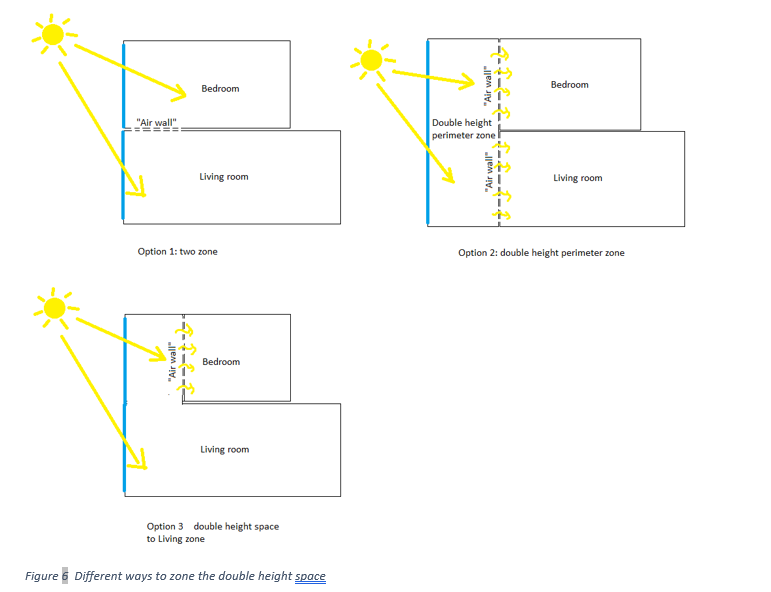I’ve got an apartment with a living/kitchen zone on the lower floor, and then the bedroom on a mezzanine floor above. Measurements say the bedroom zone “should” be ~1-2°C hotter than the living room. My EnergyPlus model (not necessarily surprisingly) refuses to show any meaningful temperature increase for it.
I’ve tried multiple zoning options – having the two zones on top of each other with a horizontal opening between them, making the living zone double height through the void space, making a separate double height perimeter zone to connect the two zones. Similarly, I’ve experimented with both manually moving the air around via the simple ventilation and zone mixing objects, as well as an airflow network. None of these really change anything – and being fair we wouldn’t really expect them to. We still have the underlying assumption of evenly mixed air in a zone.
In theory this is what the RoomAirModel options are for. Trying to add a vertical temperature gradient to the living zone however doesn’t actually affect the mezzanine zone above because (as far as I know) the room air model does not connect to the air exchange, so ZoneMixing objects or an airflow network can’t use it to take warmer air from one zone and send it to another.
If instead I try to use the AirflowNetwork Room Air Model to break the living zone into multiple air nodes, then the result is just that the upper void area is actually the coolest part of the zone because that’s not where the heat gains are. And so the mezzanine zone temperatures continue to not be warmer than those in the zone below. The airflow network room air model doesn’t really produce any temperature stratification as far as I can tell. And if it could then the AFN would probably also be able to produce interzonal temperature stratification anyway.
Multiple room air models also cannot be used at once, so there’s also no possibility of using adding a vertical gradient on top of the airflownetwork air model to artificially raise the temperature of the upper air node before connecting that to the mezzanine zone.
Looking around at the literature, there’s examples of people using CFD to work out the temperature gradient in zones like atriums and then inserting this into EnergyPlus and having that interact with hvac systems and surface heat transfer, but as far as I can tell there’s no way to actually connect it to interzonal airflow?
So yeah. Is there any way to do this in EnergyPlus? Or is this basically beyond its capabilities?




 In terms of ventilation, there's a stack effect going from lower to upper windows on the facade, but also a supply fan to the bedroom and then an extract in the adjacent bathroom that appears to be constantly running. Which did add a few complications to the airflow network.
In terms of ventilation, there's a stack effect going from lower to upper windows on the facade, but also a supply fan to the bedroom and then an extract in the adjacent bathroom that appears to be constantly running. Which did add a few complications to the airflow network.
